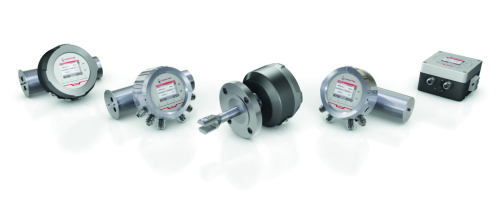

To run chemical reactions in an optimal range and to control product quality, online concentration measurement is required. This ensures a fast intervention in case of concentration variation during production. Moreover, the concentration measurement reflects the quality of the products. For each chemical a specific method should be used, e.g. density, sound velocity and refractive index values which also strongly depend on the temperatures and concentrations of the substances. The highest measurement accuracies are necessary to calculate the exact concentration values. For the calculation of these values, concentration formulas are required. They can be developed based on the raw measurement.
It is crucial to find out which sensor or combination of sensors is best for measuring the concentration of chemical liquids in production, therefore, which sensor is ideal and what has to be considered? Concentration changes may have different effects on the density, sound velocity and refractive index of the liquids.
Density sensors
The L-Dens 7000 density sensor series represents the third generation of Anton Paar process density sensors for continuous monitoring of product quality. It consists of an oscillating U-tube, an excitation and pick-up system and two temperature sensors. The sensor electronics and the optional process instrumentation controller (Pico 3000) are built into the electronics housing of the sensor. The instrument has a modular design offering various interfaces (analog, digital and fieldbus) with a wide range of different process connections and wetted parts.
Sound velocity sensors
The L-Sonic sound velocity sensors for continuous monitoring of product quality consist of a fork or a tube including tall sensing elements. The sensor electronics and the optional process instrumentation controller (Pico 3000) are built into the electronics housing of the sensor. For many liquid solutions and mixtures, the sound velocity is directly proportional to the concentration. Therefore sound velocity measurement is an appropriate parameter to determine concentrations of solutions. The sound velocity can also be used for material characterisation.
Refractive index sensors
The L-Rix inline sensor determines the refractive index of liquids based on the critical angle measurement. The refractive index is a direct measure of the concentration. The measuring prism serves as the interface between L-Rix 5100 and the sample liquid. The light source illuminates the boundary layer between the prism and sample liquid. Depending on the angle, some light rays will be totally reflected, others only partially with the majority of the light refracted into the liquid. A CMOS array detects the reflected light and measures the critical angle. This angle is used to determine the refractive index (specified as nD) and to calculate the corresponding concentration.
Combined density and sound velocity sensors
L-Com 5500 is Anton Paar’s new density and sound velocity sensor combination in one instrument for the measurement of 3-component mixtures. It consists of an L-Dens 7500 density sensor with a piezo-excited U-tube which is expanded with a sound velocity module. Density and sound velocity values are directly calculated at the sensor electronics. It is ideal for the monitoring and controlling of chemicals such as formaldehyde-methanol-water mixtures or for the production control of beer.
Evaluation units
The mPDS 5 is a powerful evaluation unit for use with density, sound velocity and refractive index sensors. It combines the highest precision with ease of operation and robust design. mPDS 5 allows intuitive operation by a touchscreen user interface. It is a modular system equipped with boards for various inputs and outputs and accommodates the entire range of Anton Paar process sensors. Analog inputs are available for additional physical quantities such as conductivity, pH or pressure.
Pico 3000 is a high performance controller for the newest generation of Anton Paar process sensors. It is either installed in the electronics housing of the sensor or in the Pico 3000 RC housing for remote control. Different interfaces are available for communication. The modular design enables several configurations from simple analog output to high end communication via fieldbus. A simple and direct configuration of all values by a computer using the configuration software Pico 3000 Software is available.
Summary
When concentration measurement is required in a customer-specific process, it is important to choose the most suitable sensor. The question is: which sensor or combination of sensors ideally measures liquids in production? A large portfolio of sensor types and wetted parts allow multiple customer requirements to be fulfilled and provide flexible installation possibilities. Anton Paar also helps its customers to determine where the sensor should be installed and supports them throughout the installation of the high precision instruments or complete systems.
The company has a large database of concentration formulas for many different substances. Its experts can easily develop concentration formulas for new liquids/applications. Decades of experience in lab measurement as well as in process measurement provide the basis for tailormade solutions.
For more information contact Raymond Calitz, Anton Paar, +27 78 801 9319, [email protected], www.anton-paar.com

© Technews Publishing (Pty) Ltd | All Rights Reserved